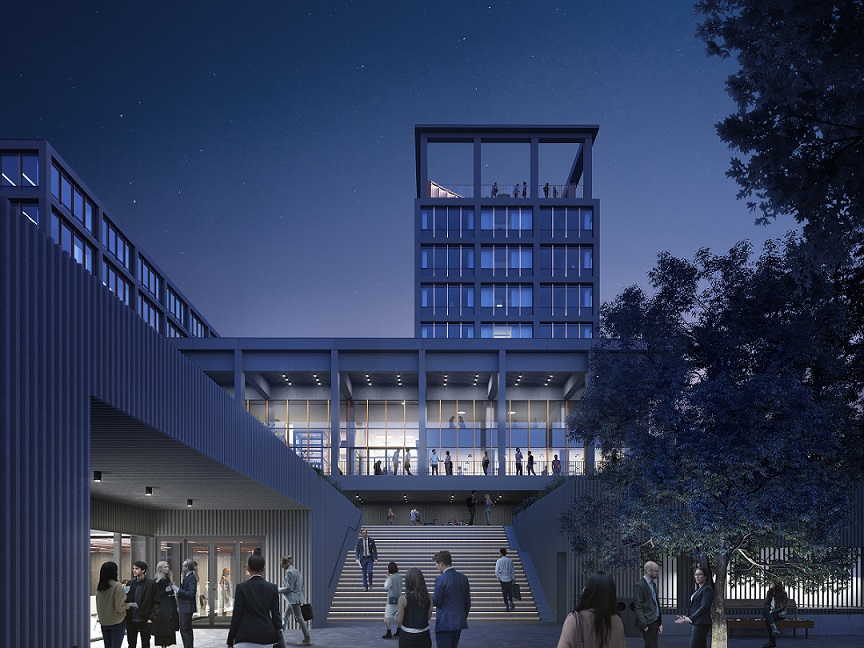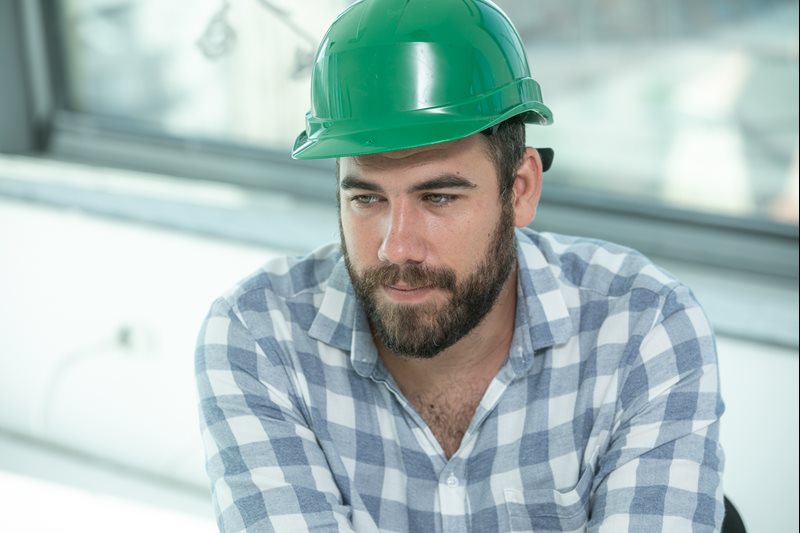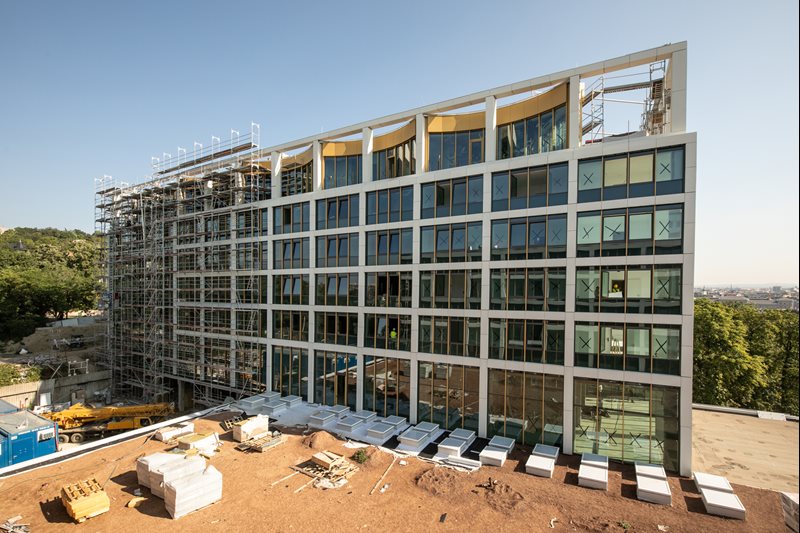The future of Corvinus is in this building

The Ménesi Campus of Corvinus University is a lively place these days. For the time being, it’s not lecturers and students rushing to class or sitting in co-working spaces, but contractors on each floor finalising the building’s key structural and mechanical solutions. “Work is now underway inside the building and in many ways, it really is the finishing touches. The building is structurally complete, both towers are ready for access, and now the eyes of the world are on the contractors to make sure all the wiring, circuits, switches, flooring and other details are in place. We expect the building to be technically handed over to us in mid-November,” says Tibor Misovicz at the beginning of the interview, describing the progress of the construction.

J for Jövő (Future) and K for Közösség (Community)
The two towers of the building are now visible from the Pest side. According to Márton Barta, it’s time to learn now that they will be referred to as Tower J or Tower K, and the choice of the letter pair is no coincidence: “By Tower J, we mean Jövő (Future), which will house the floors dedicated to teaching activities. And Tower K is best described by the call word Közösség (Community), as in addition to the four dormitory floors , there will be a number of other venues where students can really meet each other”.
At the Ménesi Campus, we will have to stop looking for classrooms in the classical sense, there are rather many learning spaces that can be dynamically shaped and arranged, where we want to focus on collaboration.
They break with tradition and approach teaching activities from a different angle than the classic lecture and seminar rooms. “We would like to democratise education in a spirit where learning is not about what the lecturer is presenting, but about the joint results that the course participants create as partners,” says Márton Barta, explaining what he sees as a forward-looking educational experience at Corvinus.
There will be a large auditorium on the ground floor, but the campus will also be filled with dynamically reconfigurable collaborative spaces, project spaces and focus rooms. In fact, Márton Barta also pointed out that it will be possible to hold classes outside in the garden, which is a real speciality.

Designed for the unborn
Tibor Misovicz said that it is very rare for a real estate project to have sufficient time for planning, and for Corvinus this was a given during the community planning process. He added that the decision to keep the original building structure was taken in consultation with the architects, partly because of its good condition and partly because the demolition of such a massive building would have been impossible on the site.
“According to the statical expertise, this structure can last another 25-50 years, so we had to design the building in a way that would be functionally usable by the next generation. People who have not yet been born will also learn here,” Tibor points out. It’s no coincidence that they envisioned spaces that are easy to shape and transform, and they want the building to change dynamically with use.
Sustainability was also an important consideration in the design, which is why the state-of-the-art energy system with geothermic probes, solar panels and a heat pump is being installed. The aim is to reduce the carbon footprint of the two towers as much as possible. In fact, smart building solutions such as automatic external shading systems are also being developed.
“It is important to note that campus values, sustainability or even technology intensity are not empty call words. We only use technology for the purposes of the university citizens who are here, that is, we want technology to serve people and humanity to define the space, and never the other way around,” adds Márton Barta.
It is planned that the university community will be able to take possession of the building from February, the start of the spring semester. “It’s like when you take possession of a new apartment. You plan where you’re going to put items, and in the process, you realise that the bookshelf is small, the rack needs to go somewhere else and the washing machine won’t fit where it was intended. Here too, we expect that actual use will have a huge impact on the layout of the spaces. ” – Tibor says of what he expects in the spring.

Meet and create outside university classes
Both interviewees immediately mention the Data Space as their favourite part of the building. On the first floor of Tower K, with high ceilings and a high-quality infrastructure, the desks, chairs and other facilities will support individual and group work to the highest possible standard, alongside state-of-the-art IT equipment. But there will also be a Makerspace, a workshop where physical objects can be created together.
Tibor Misovicz also points out that the building communicates to a certain extent with its past. For example, in the Data Space, the 3×2 metre control board of the electricity network of the old building will be installed: “This board looks like a very old keyboard, and a relic from the seventies will look very good in a modern space”.
The same is true of the new life of the water tank in the former swimming pool on Mányoki Road, where a 3-dimensional climbing wall will be built to enhance the sports facilities offered by Corvinus.
Márton Barta also notes that “the heart of Corvinus will pound like a drum because of the green space here”, as there are hardly any trees around the buildings in Pest. In addition, he is very much looking forward to the 170-square-metre Panorama Lecture Hall at the top of Tower J, from which you can enjoy a 270-degree view of the city. “It’s going to be a real challenge to teach a class here without the students being distracted,” says the Corvinus Head of Strategy.

It is already certain that from the spring semester, the Data Science in Business study programme and PPE, as well as some master, executive programmes and the talent management programme currently under development, will be held on this campus, but Márton Barta also said that they want to make the building feel like home to all university citizens: “There will be community spaces here that have long been missing from Corvinus. Just think of the huge garden, but there will also be a lounge area at the entrance and a rooftop café with a spectacular view. We hope that students will really get into these spaces and start using them, because they will really give us everything we need to have fun and create good things together in a collaborative way”.